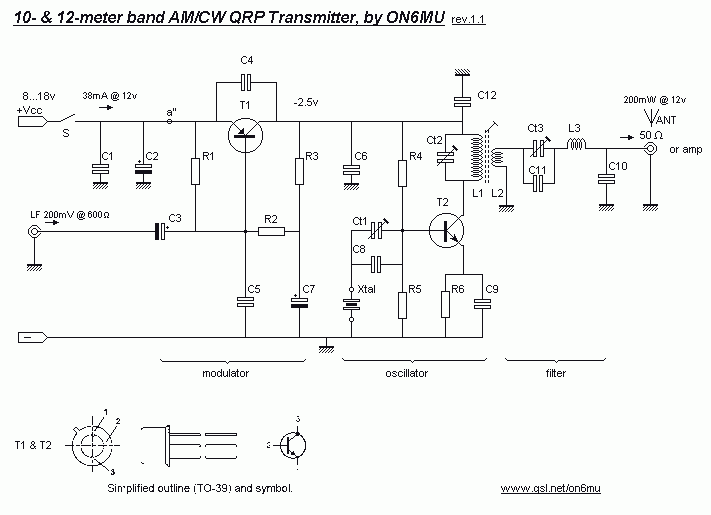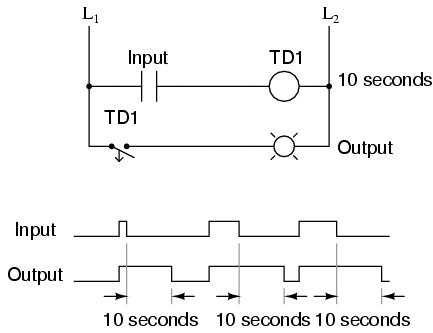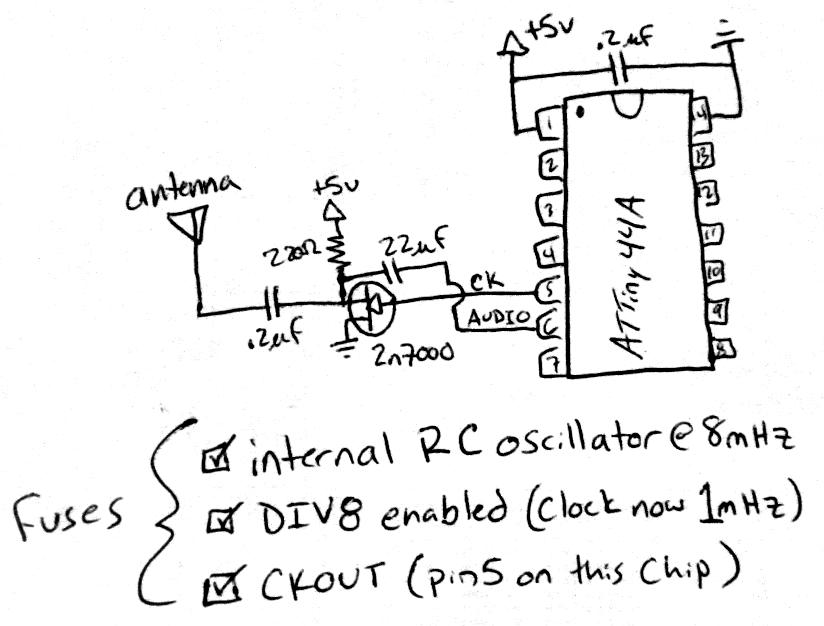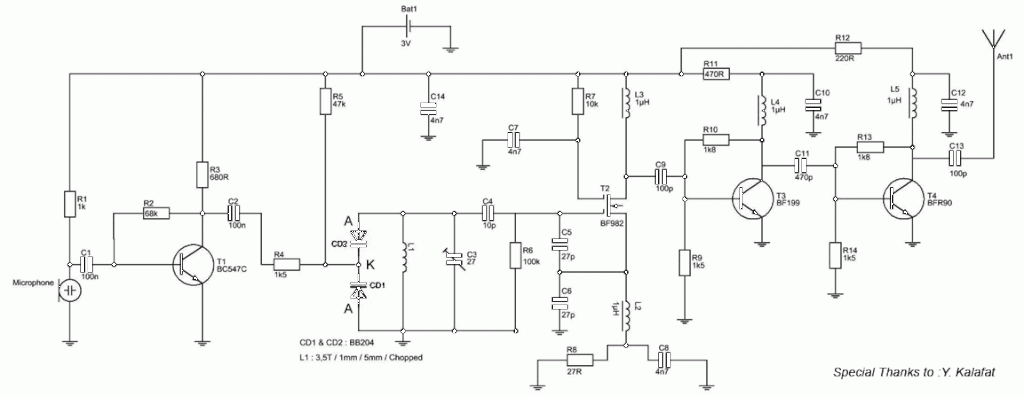
USB Mono FM Transmitter
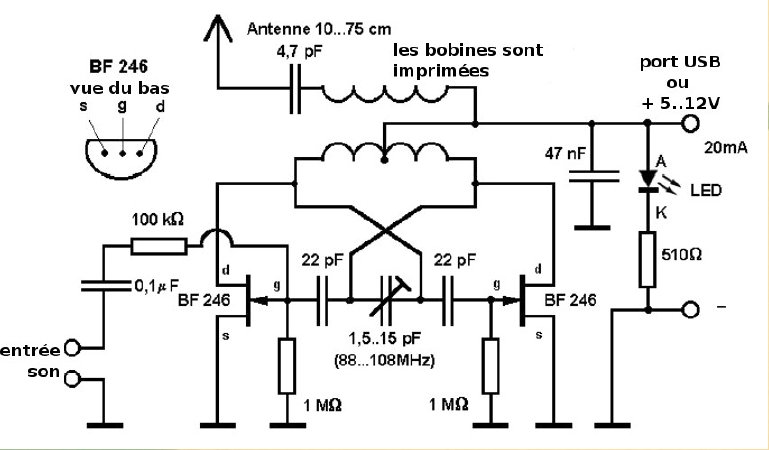
This compact FM transmitter is designed for connection to a USB port and has a range of approximately 50 meters. It can be utilized alongside multiple mini-transmitters to create a diverse and engaging radio program. The power supply through the USB port ensures high frequency stability. Alternatively, the transmitter can be powered by a battery operating within a voltage range of 5 to 12 volts.
This FM transmitter circuit employs a simple yet effective design, typically utilizing an integrated circuit (IC) such as the BH1417 or similar, which is known for its efficiency in FM modulation. The transmitter's primary function is to convert audio signals into radio frequency signals that can be transmitted over the airwaves.
The circuit can be powered by a USB connection, which provides a stable 5V supply, or by an external battery source ranging from 5V to 12V, allowing for flexibility in different operating environments. The use of a USB power source not only simplifies the design but also enhances frequency stability due to the regulated voltage.
The transmitter includes an audio input stage, where audio signals from various sources—such as smartphones or computers—can be fed into the circuit. This input stage typically consists of capacitive coupling to eliminate any DC offset from the audio source. An operational amplifier may be used to boost the audio signal to a suitable level for modulation.
The modulation process occurs within the IC, which generates a carrier frequency typically in the FM band (88-108 MHz). The output stage of the circuit includes a power amplifier to increase the signal strength, allowing it to be transmitted over a distance of up to 50 meters. An antenna, often a simple wire, is connected to the output to radiate the modulated signal effectively.
To ensure optimal performance, the circuit may include components such as resistors, capacitors, and inductors that help in tuning the transmitter to the desired frequency and filtering out unwanted harmonics. A variable capacitor or inductor can be included to allow the user to adjust the frequency, providing versatility in transmission.
Overall, this FM transmitter is an excellent solution for creating localized radio broadcasts, whether for personal use, educational purposes, or small community events, leveraging its compact design and ease of use.This small FM transmitter with a range of about 50 meters designed for connection to the USB port. With lots of mini-transmitters then you have a comprehensive, action-packed radio program. Due to the power supply via the USB port of a high frequency stability is achieved. Alternatively, the receiver, a battery 5 to 12 volts to operate. FM Transmitter Co.. 🔗 External reference
This FM transmitter circuit employs a simple yet effective design, typically utilizing an integrated circuit (IC) such as the BH1417 or similar, which is known for its efficiency in FM modulation. The transmitter's primary function is to convert audio signals into radio frequency signals that can be transmitted over the airwaves.
The circuit can be powered by a USB connection, which provides a stable 5V supply, or by an external battery source ranging from 5V to 12V, allowing for flexibility in different operating environments. The use of a USB power source not only simplifies the design but also enhances frequency stability due to the regulated voltage.
The transmitter includes an audio input stage, where audio signals from various sources—such as smartphones or computers—can be fed into the circuit. This input stage typically consists of capacitive coupling to eliminate any DC offset from the audio source. An operational amplifier may be used to boost the audio signal to a suitable level for modulation.
The modulation process occurs within the IC, which generates a carrier frequency typically in the FM band (88-108 MHz). The output stage of the circuit includes a power amplifier to increase the signal strength, allowing it to be transmitted over a distance of up to 50 meters. An antenna, often a simple wire, is connected to the output to radiate the modulated signal effectively.
To ensure optimal performance, the circuit may include components such as resistors, capacitors, and inductors that help in tuning the transmitter to the desired frequency and filtering out unwanted harmonics. A variable capacitor or inductor can be included to allow the user to adjust the frequency, providing versatility in transmission.
Overall, this FM transmitter is an excellent solution for creating localized radio broadcasts, whether for personal use, educational purposes, or small community events, leveraging its compact design and ease of use.This small FM transmitter with a range of about 50 meters designed for connection to the USB port. With lots of mini-transmitters then you have a comprehensive, action-packed radio program. Due to the power supply via the USB port of a high frequency stability is achieved. Alternatively, the receiver, a battery 5 to 12 volts to operate. FM Transmitter Co.. 🔗 External reference
Warning: include(partials/cookie-banner.php): Failed to open stream: Permission denied in /var/www/html/nextgr/view-circuit.php on line 713
Warning: include(): Failed opening 'partials/cookie-banner.php' for inclusion (include_path='.:/usr/share/php') in /var/www/html/nextgr/view-circuit.php on line 713
